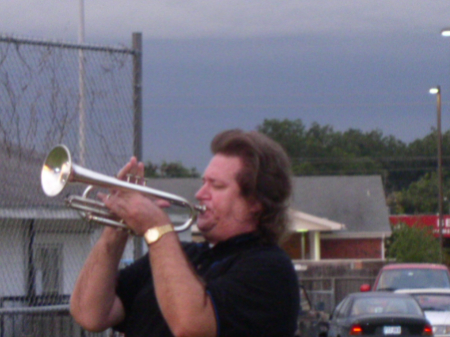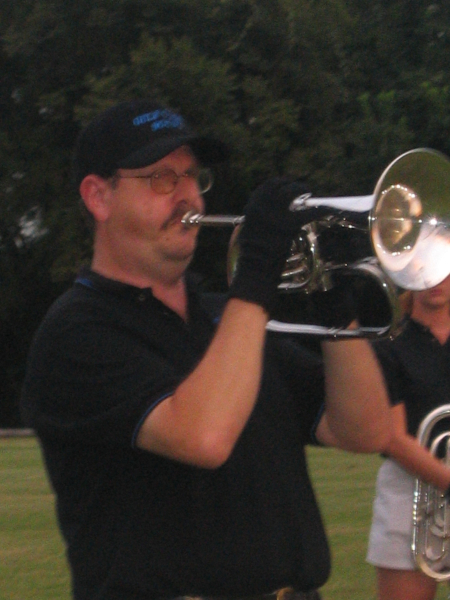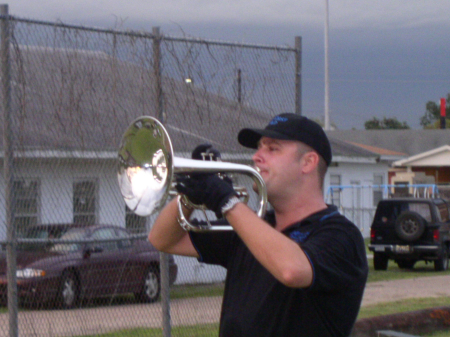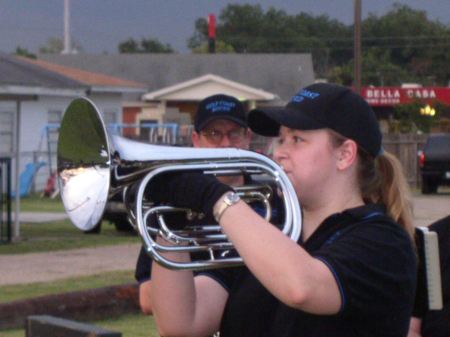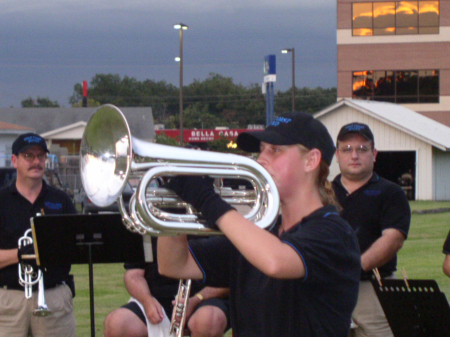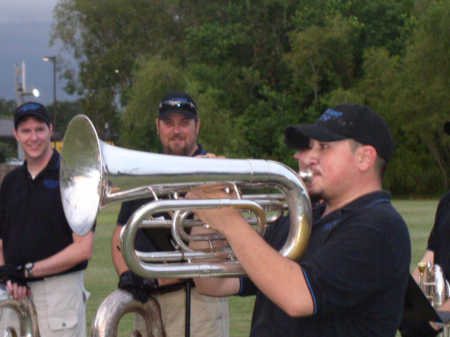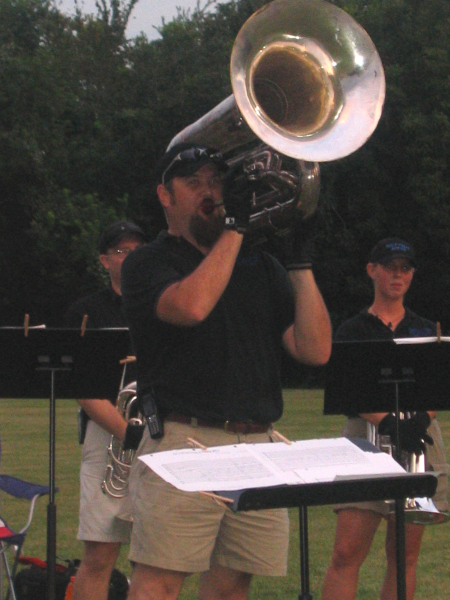Bugles
|
Gulf Coast Sound plays only on G Bugles. This means that the horns are pitched
in the Key of G, not Bb or F like marching bands. Most junior (DCI) corps now
use Bb and F instruments, along with about half of the all-age (DCA) corps. GCS is
staying true to our Drum & Bugle Corps roots and there are no plans to switch to
Bb and F Bugles now or anytime in the future. The staff and members prefer the
sound of true G Bugles and as long as we are able to purchase them and repair
them we will continue to use them.
|
|
Click on the picture for a better look at the horns. |
|
Soprano Bugle - The Soprano, or Sop, is the soprano voice in the bugle choir. It's closest cousin in the marching band world is the Trumpet. A typical full size hornline will have 20-24 Sops broken up into 3 parts. |
|
Alto (Flugel) Bugle - The Alto, or sometimes called a Flugel, is played in the same range as the Soprano but has a darker, richer tone. The Alto was once commonly used to supplement the Mellophone line or as a lower Soprano voice. Today it is frequently used for solos. On the rare occasion that a full size Corps uses Altos there will likely be no more than 4-6. Most Corps prefer using only Sops and Mellos for the upper and mid-range voices. |
|
Mellophone Bugle - The Mellophone, or Mello, is the alto voice in the bugle choir. It's closest marching band cousin is the F Mellophone, or Bb Marching French Horn. The Mello is the primary mid-range voice in most modern Corps. Typically 10-12 Mellos on 2 parts will be used in a full hornline. |
|
French Horn Bugle - The French Horn, or Frenchie, is the tenor/alto voice in the bugle choir. It will fit in with the Lead Baritones, the Mellophones, or as a bridge between the two sections. Occasionally the Frenchie will have its' own unique counter-harmony part to compliment the Mellophone line. It's closest marching band cousin is the Bb Marching French Horn. The Frenchie has a luscious, rich tone that is VERY similar to that of a concert French Horn and has a range easily covering 3 full octaves (G to G). The partials in the upper register are packed extremely close together making this a challenging horn to march with. |
|
Baritone Bugle - The Baritone, or Bari, is the tenor/baritone voice in the bugle choir. It's closest marching band cousin is the Trombone. However, the Baritone is much darker and richer than a Trombone, which tends to be very bright. A full size horn-line will typically have 12-16 Baritones and 4-8 Euphoniums. The Bari and Euph are reserved for the coolest, most laid-back members of the hornline. |
|
Euphonium Bugle - The Euphonium, or Euph, is the baritone voice in the bugle choir. Although it plays in the same range as the Baritone Bugle, the Euph has an even richer, darker sound. It's like comparing milk chocolate to dark chocolate. GCS typically has 2 Bari parts and 2 Euph parts in all of the musical arrangements. There are a couple of ways to use the Euph in the section. The first is to have 1 or 2 on each part to give the whole section a darker sound. The other is to have only the lower parts (Euph I and II) played on this big bore horn. |
|
Contrabass Bugle - The Contrabass, or Contra, is the bass voice in the bugle choir. It's closest marching band cousin is the Tuba. The Contra has an incredibly rich, dark bass sound. If played properly it can be registered on a Richter Scale two states away. Contra players are typically insane. Due to the amount of air needed to play the horn very little gets to their brains. A pack of Contras players should be treated with the utmost respect. Do not engage in conversation unless you have absolutely no other choice. A full size hornline will have usually have 10-12 Contras. Although, in 1992 the "Star of Indiana" marched 16 King K-90 Contras!! |
|
|
|
|
|
|
|
|
|
|
|
|
